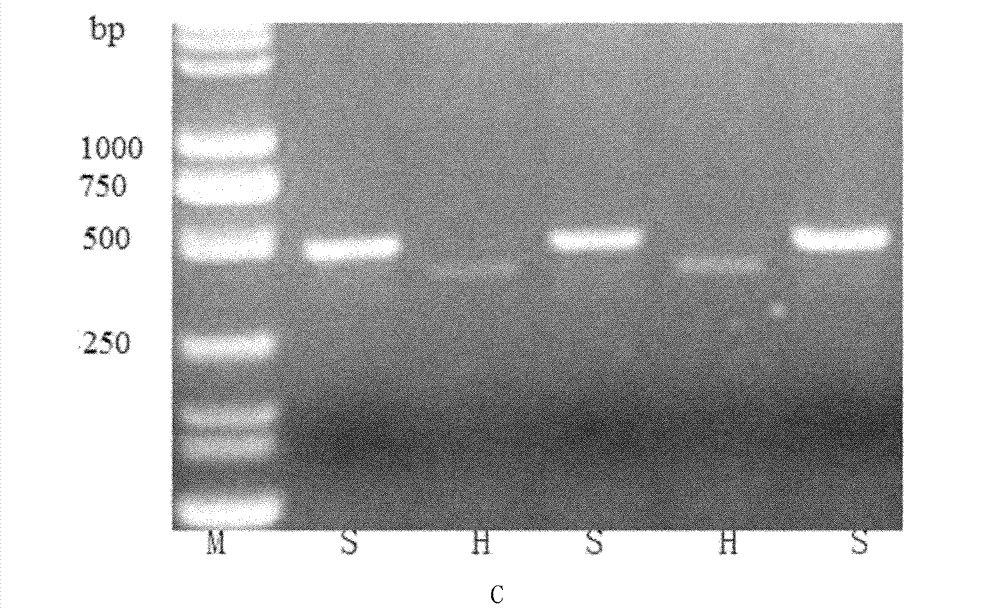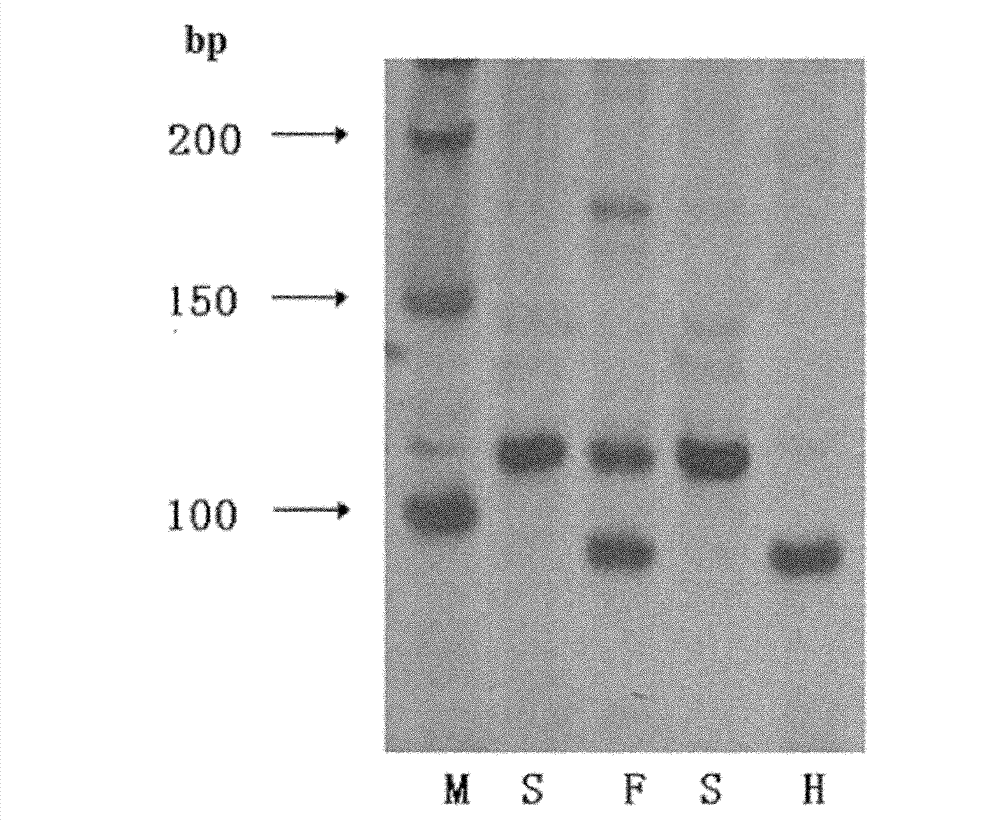Molecular marker method for anti-rice blast gene Pi-hk1 (t) of paddy
A rice blast resistance gene, pi-hk1 technology, applied in the field of molecular genetics, can solve the problems of difficult disease resistance gene aggregation, difficult phenotype identification, low breeding efficiency, etc., and achieves convenient identification, control of breeding population size, and high cost. Effect
- Summary
- Abstract
- Description
- Claims
- Application Information
AI Technical Summary
Problems solved by technology
Method used
Image
Examples
Embodiment 1
[0026] (1) Materials and methods:
[0027] 1. Li Peifu et al. obtained F 1 , selfing to obtain F 2 The population was isolated for mapping, and the Pi-hk1(t) gene was mapped between SSR markers RM7654 and RM27381 (Chinese Rice Science, 2007, 21: 579-584). On this basis, the present invention selects 3 homozygous disease-resistant single plants containing target DNA fragments for planting, respectively backcrossing and selfing with Su Yunuo to form BC 2 f 2 Separation of large groups for fine-tuning.
[0028] 2. For the methods of strain cultivation and inoculation identification, refer to Li Peifu et al. (Chinese Rice Science, 2007, 21: 579-584).
[0029] 3. DNA extraction method: use the SDS method to extract the DNA of each individual plant in the isolated population.
[0030] 4. Development of new markers: New markers were designed between the initial target area RM7654-RM27381.
[0031] (1) SSR marker design: download the genome sequence of the BAC where the target g...
PUM
 Login to View More
Login to View More Abstract
Description
Claims
Application Information
 Login to View More
Login to View More - R&D
- Intellectual Property
- Life Sciences
- Materials
- Tech Scout
- Unparalleled Data Quality
- Higher Quality Content
- 60% Fewer Hallucinations
Browse by: Latest US Patents, China's latest patents, Technical Efficacy Thesaurus, Application Domain, Technology Topic, Popular Technical Reports.
© 2025 PatSnap. All rights reserved.Legal|Privacy policy|Modern Slavery Act Transparency Statement|Sitemap|About US| Contact US: help@patsnap.com



